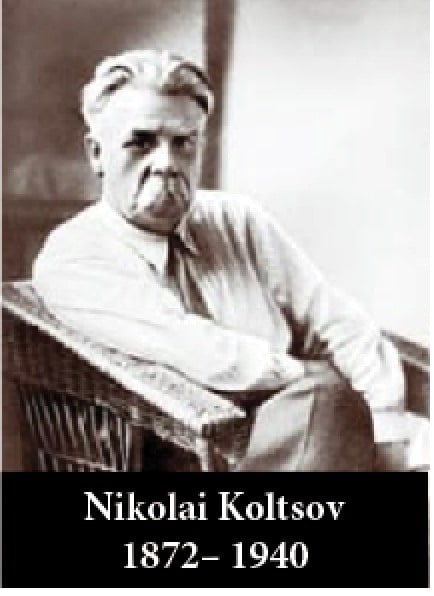
The classic examples of scientists who were threatened with death for presenting their theories are captured in the stories of Nicolaus Copernicus and Galileo Galilei. Until the late 17th century, the Catholic Church taught that the solar system was geocentric, i.e., the heavenly bodies revolved around the earth that sat stationary at the center. Anyone who challenged this teaching risked a charge of heresy, which could result in a death sentence. Around 1513, Polish mathematician and astronomer Nicolaus Copernicus wrote an essay titled Commentariolus in which he stated:
Accordingly, since nothing prevents the earth from moving, I suggest that we should now consider also whether several motions suit it, so that it can be regarded as one of the planets. For, it is not the center of all the revolutions.
Possibly fearing persecution by the Church, he distributed this essay among only a few colleagues. It was not until three decades later, in 1543, that his landmark work, De Revolutionibus Orbium Coelestium (On the Revolutions of the Heavenly Spheres) was published– just before his death. It carried a dedication to Pope Paul III, as protection against a potential charge of heresy.
Throughout the next half-century there was a growing acceptance among scientists of the heliocentric model of the universe. However, the Catholic Church increasingly perceived this paradigm as a challenge to the Holy Scriptures. Charges of heresy became a growing threat to scientists who dared to challenge the geocentric model. In 1593, Giordano Bruno was tried for heresy by the Roman Inquisition and on February 17, 1600 was burnt alive when he refused to recant his beliefs.
Meanwhile Galileo Galilei, in 1610, was peering into the heavens with the newly invented telescope that he improved to view the four largest moons of Jupiter. Relying on observation, rather than scriptures, he was able to see farther than the mortals mired in speculation. Galileo shared his discoveries with the rest of the scientific world in a book titled, The Starry Messenger. News of his celestial observations swept across the Italian peninsula and beyond, catapulting Galileo into a position of high celebrity. As he shared these ideas, his enemies persuaded the priesthood that he was challenging the teachings of the Catholic Church. Galileo was summoned to appear before the Inquisition on a charge of heresy. On February 26, the famous Edict of 1616, ordered Galileo “to abandon…the opinion that the sun stands still at the center of the universe and the earth moves, and henceforth not to hold, teach, or defend it in any way whatever, either orally or in writing.”
In 1632, Galileo published his Dialogue Concerning the Two Chief World Systems in which he compared the geocentric and heliocentric versions of the solar system–the two competing paradigms. This was perceived as a violation of the papal order of 1616, so Galileo was once again summoned before the Inquisition in February 1633. To escape a sentence of death, Galileo was forced to renounce his assertions concerning the heliocentricity of the universe. His book, Dialogue was placed on the Index of Prohibited Reading (It remained on that list for almost 200 years.) Galileo was sentenced to incarceration for life, but the humane and supportive Cardinal Barberini had his sentence commuted to house arrest in Arcetri, near Florence. It has been suggested that Galileo’s death sentence was revoked because his daughter had become a nun in the Catholic Church. (See Galileo’s Daughter by Dava Sobel.)
It would be easy to dismiss these incidents as merely consequences of an earlier era of pre-science when superstition and religious dogma preceded rational thought. However, we have a more recent story of the USSR scientist Nikolai Koltsov in the 20th century. Shortly after the formation of its union, the USSR withdrew its support for the study of genetics. In 1927 Russian zoologist Nikolai Koltsov, ignoring the prohibition, discovered what he called a “giant hereditary molecule [composed of] two mirror strands that would replicate in a semi-conservative fashion using each strand as a template.” Seven years earlier, Koltsov had been arrested as a member of the fictitious “anti-Soviet Tactical Center” and sentenced to death. A personal appeal to Lenin, who was the head of the government of Soviet Russia, resulted in his exoneration.
As director of the Institute of Experimental Biology in Moscow, Koltsov continued to promote his theories of genetic inheritance. When Trofim Lysenko became director of the Institute of Genetics of the Soviet Union in 1940, he outlawed the study of evolution or genetics, arguing that it opposed the egalitarian values of socialism. It was feared that acknowledging the heritability of traits such as intelligence could justify a class-structured society. Scientists who supported the Mendelian laws of heredity were sent to the Gulag for “cognitive adjustment”. Supporters of Lysenko published articles describing Koltsov’s theories as “fascistic nonsense.” A short time later, Koltsov was found dead. His sudden and unexpected demise has been attributed to poisoning administered by the Soviet secret police, though “a stroke” was given as the official cause of death. Koltsov’s wife committed suicide on the day of her husband’s death. In 1953, James Watson and Francis Crick, unaware of Koltsov’s work, discovered the double helix structure of DNA, confirming the findings of the maligned Russian biologist. Fortunately, today throughout most of the world, scientists do not face the threat of death for their research. However, funding for research is sometimes influenced by political agendas, especially in the social sciences where ideologies often intrude on free thinking.
